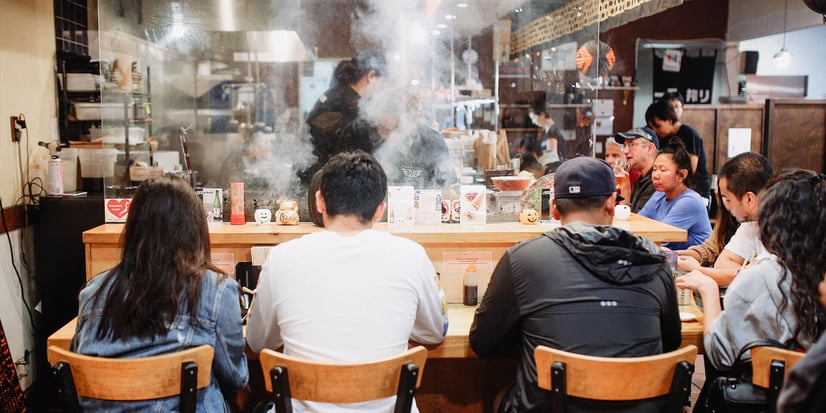How to open a pop-up restaurant in 6 steps

1. Craft your concept
Why do you want to set up a pop-up restaurant? Are you trying out a fresh dining concept, experimenting with creative menus or testing the market in a new location? How will the pop-up stay true to your brand while offering diners something different? Make sure you have a clear picture of your goals, the type of customers you want to attract and the experience you will offer them. Then build a strategy around that, to make sure your pop-up attracts diners who will really appreciate what you’re doing.2. Location, location, location!
What type of neighborhood will suit your brand and make sure you’re seen by the customers you want? It could be close to theatres, in a busy shopping area or next to a vibrant marketplace. You can set up your pop-up restaurant pretty much anywhere, but it pays to do your research. Walk around the area you’re considering to see how many pedestrians are likely to see your restaurant, pop in and spread the word. Once you’ve found your perfect location, you need a building that’s the right size for your venture and is suitable for cooking and serving food. Former café and restaurant spaces can be a good choice as they are already set up with dining in mind. But whatever space you choose – no matter if it’s a warehouse or a shipping container – you will need to think about how you’re going to set up your kitchen and dining area. Once you’ve found the perfect place for your pop-up, check with local authorities to make sure you have any permits you need before you open.3. Keep it simple
Your dishes may be unique and creative, but keeping the menu simple is the key to success for a pop-up restaurant. With limited space for storage, preparation and cooking, à la carte menus can add too much complexity in the kitchen. To keep everything running smoothly it’s often best to provide a set menu at fixed prices.4. Set up your spaces
Two things are essential for a pop-up restaurant: a mobile kitchen and a dining room. Look at the space you have and the location of amenities like electricity points and water pipes. Then figure out the most efficient layout for food storage, preparation, cooking and serving. Next, look at where your diners are going to order, receive and eat their food. You might want a small dining room with waiter service, a self-serve counter or a street-food experience take-out options and some tables and chairs outside. The right layout will depend on your dining concept works in the space you have. Above all it should be a welcoming, comfortable and convenient experience for your diners.5. Set up a pay-as-you-go payment system
Your pop-up restaurant might be a temporary venture, but your diners will want to pay for their food the same way they would in any other store, using anything from cash and cards to app-based payments. Groups of diners might want to split the bill and use different payment methods, and if you’re in a popular tourist area they might even want to use different currencies. Selecting a cloud-based POS system with a pay-as-you-go model allows you to scale up and down as needed – so you can extend your POS to your pop-up outlet and then scale it down when you close its doors for good. Choosing a subscription-based, pay-as-you-go solution means you only need a Wi-Fi connection, a tablet device and a credit card terminal to accept payments. Make sure your data is backed up automatically in the cloud so you can access it wherever you are to see how your pop-up is performing. A POS system that includes reporting features is essential, so you can measure your pop up location’s success and plan your next venture.6. Get close to your customers
A new, local pop-up restaurant is an ideal subject to engage social media users, providing a free marketing channel for you. Whet diners’ appetites by creating a buzz about your new venture before it opens, and engage with customers when the restaurant is up and running. Post daily specials on Facebook and Twitter, along with limited-time offers or special events. Don’t forget to encourage diners to ‘check in’ on social media and share photos of their food on sites like Facebook, Instagram and Twitter when they visit your restaurant. When customers visit your store, take their contact details and keep in touch by sending them follow-up information, news about local events and details of your next pop-up opening. A smart way to collect customers’ email address is to send them an electronic receipt for their purchases. If you’re looking to reach a new audience or test a new location, a pop-up restaurant could be the perfect way to start. Do your research, engage with your target audience and make sure your customer experience is as good as your food, and your pop-up could become the next big thing in dining. If you need help finding the right technology to help support your restaurants, do not hesitate to get in touch with our experts.

